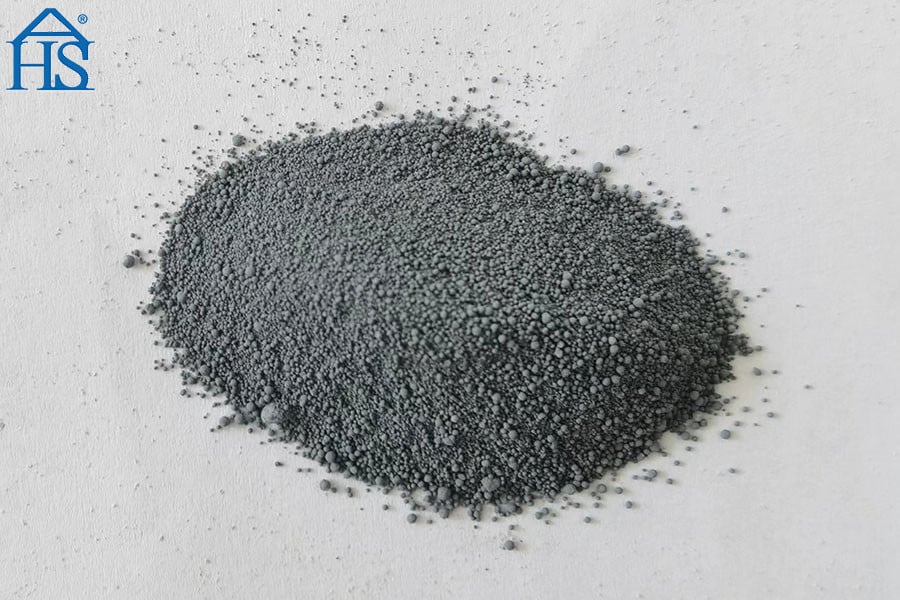Erken Keşifler ve İlk Kullanım
silika dumanı, mikrosilika olarak da bilinir, ilk olarak 1940'larda ve 1950'lerde silikon ve ferrosilikon alaşımı üretim süreçlerinin bir yan ürünü olarak tanımlandı.. Bu dönemde, silikon metalinin eritilmesi sırasında büyük miktarlarda ince silikon dioksit parçacıklarının üretildiği keşfedildi. Bu parçacıklar başlangıçta atık olarak kabul edildi ve sıklıkla atmosfere yayıldı., Önemli çevre kirliliğine neden olan.
Potansiyelin Tanınması
1970'lerde, araştırmacılar silika dumanının inşaat malzemelerinde potansiyel kullanımlarını fark etmeye başladı, özellikle beton teknolojisi alanında. Silis dumanının puzolan (bir malzeme) gibi davranabileceği gözlendi., kireç ve su ile karıştırıldığında, bağlayıcı özelliklere sahip bileşikler oluşturur. Silika dumanının yüksek silika içeriği ve ultra ince parçacık boyutu, onu betonun özelliklerini geliştirmek için değerli bir katkı maddesi haline getirdi..
Ticari Üretim ve Uygulamalar
1970'lerin sonu ve 1980'lerin başında, silika dumanının ticari üretimi başladı. Betonda kullanımı, birçok temel özelliği iyileştirme yeteneğinden kaynaklanmaktadır., gibi:
- Kuvvet: Silis dumanı beton Geleneksel betona kıyasla önemli ölçüde daha yüksek basınç ve çekme dayanımına sahiptir.
- dayanıklılık: Betonun agresif kimyasallara ve çevre koşullarına karşı direncini arttırır., geçirgenliği ve dolayısıyla donma-çözülme döngülerinden kaynaklanan hasara duyarlılığı azaltmak, klorürler, ve sülfatlar.
- işlenebilirlik: Doğru kullanıldığında, silis dumanı betonun işlenebilirliğini artırabilir, yüksek su ihtiyacından dolayı işlenebilirliği korumak için sıklıkla süper akışkanlaştırıcıların kullanımını gerektirmesine rağmen.
Önemli Projeler ve Artan Evlat Edinme
Yüksek performanslı betonda silis dumanının benimsenmesi (HPC) Birçok önemli inşaat projesinde kullanılmasıyla ivme kazandı. Örneğin:
- Amerika Birleşik Devletleri'nde, 1980'lerde Washington Eyaletindeki Paine Field taksi yolunun inşasında silis dumanının kullanılması, bunun dayanıklılık ve sağlamlık açısından faydalarını ortaya koydu, daha geniş kabulü teşvik etmek.
- Norveçte, Heidrun petrol platformunun yapımında silis dumanı kullanıldı, Zorlu deniz ortamlarına dayanmak için olağanüstü dayanıklılığa sahip beton gerektiren.
Mevzuat ve Standart Geliştirme
Silis dumanının faydaları daha geniş çapta kabul görmeye başladıkça, Betonda doğru kullanımını sağlamak için standartlar ve yönergeler geliştirildi. Amerikan Beton Enstitüsü gibi kuruluşlar (ACI) ve ASTM International silika dumanı için spesifikasyonlar ve test yöntemleri belirledi, inşaat projelerinde güvenli ve etkili kullanımı için bir çerçeve sağlamak.
Modern Uygulamalar ve Devam Eden Araştırmalar
Bugün, silis dumanı inşaat sektöründe köklü bir malzemedir, özellikle yüksek performanslı beton gerektiren uygulamalar için. Yaygın olarak kullanılır:
- Köprüler ve deniz yapıları: Dayanıklılığın ve agresif ortamlara karşı direncin kritik olduğu yerlerde.
- Yüksek binalar: silis dumanı betonunun artan mukavemetinin daha ince ve daha hafif yapısal elemanlara izin verdiği yerlerde.
- Endüstriyel zeminler ve kaldırımlar: yüksek aşınma direnci ve azaltılmış geçirgenliğin istendiği yerlerde.
Devam eden araştırmalar, betonun performansını ve sürdürülebilirliğini daha da artırmak için yeni uygulamaları keşfetmeye ve silis dumanının diğer tamamlayıcı çimento esaslı malzemelerle birlikte kullanımını optimize etmeye devam ediyor.
Özetle, silis dumanının tarihi, atık bir ürünü, çeşitli zorlu uygulamalarda betonun performansını ve dayanıklılığını önemli ölçüde artıran değerli bir malzemeye dönüştürmenin hikayesidir.
Silika Dumanı Tedarikçisi
Yoğunlaştırılmış Silika Dumanı:G85D,G92D,G94D,G96D
Yoğunlaşmamış Silika Dumanı:G85U,G92U,G94U,G96U
Beyaz Mikrosilika(Zirconium silica fume):ZSF94,95,96
- E-posta: sales@superior-abrasives.com
-
Naber: +86-18638638803





